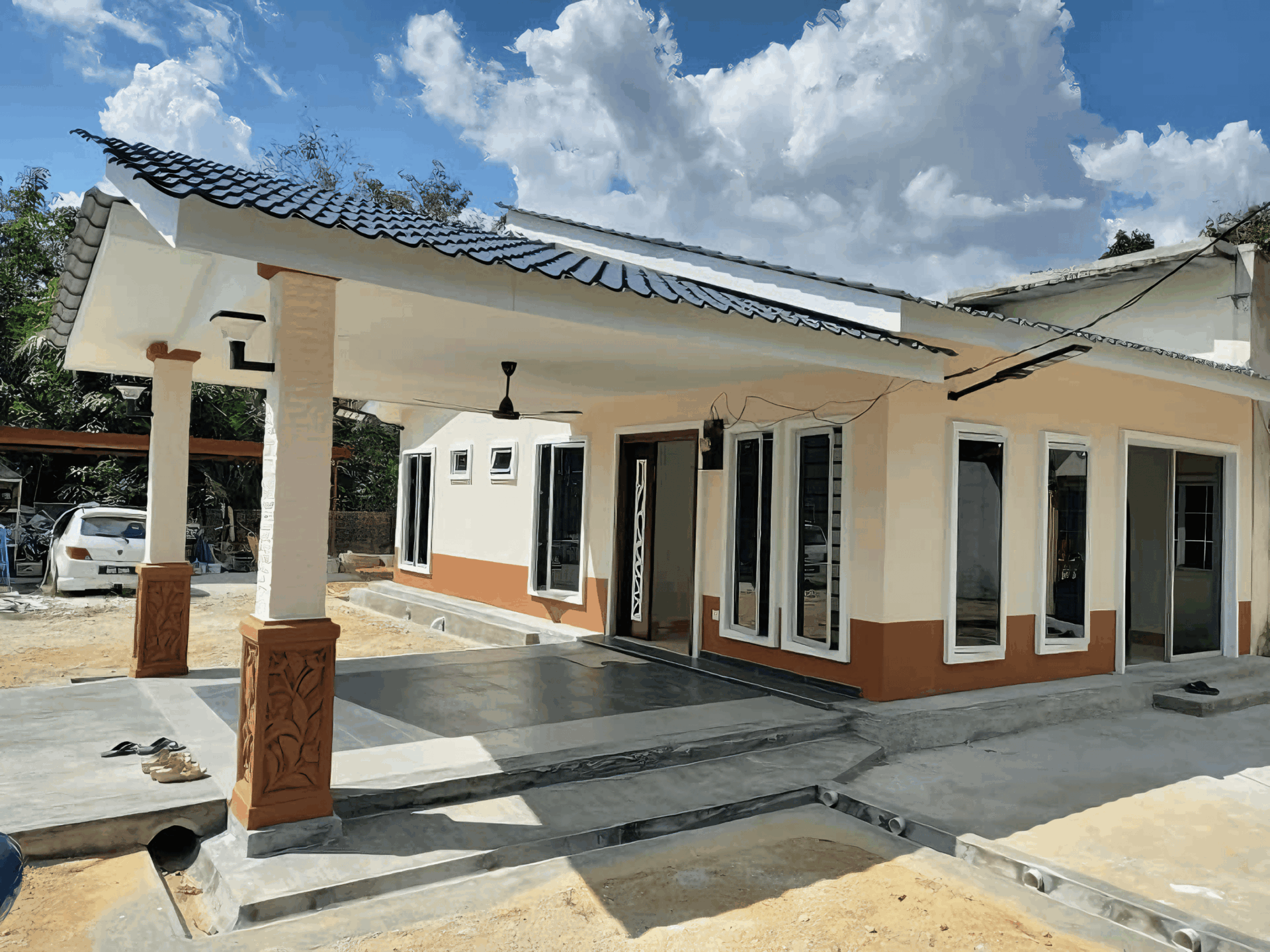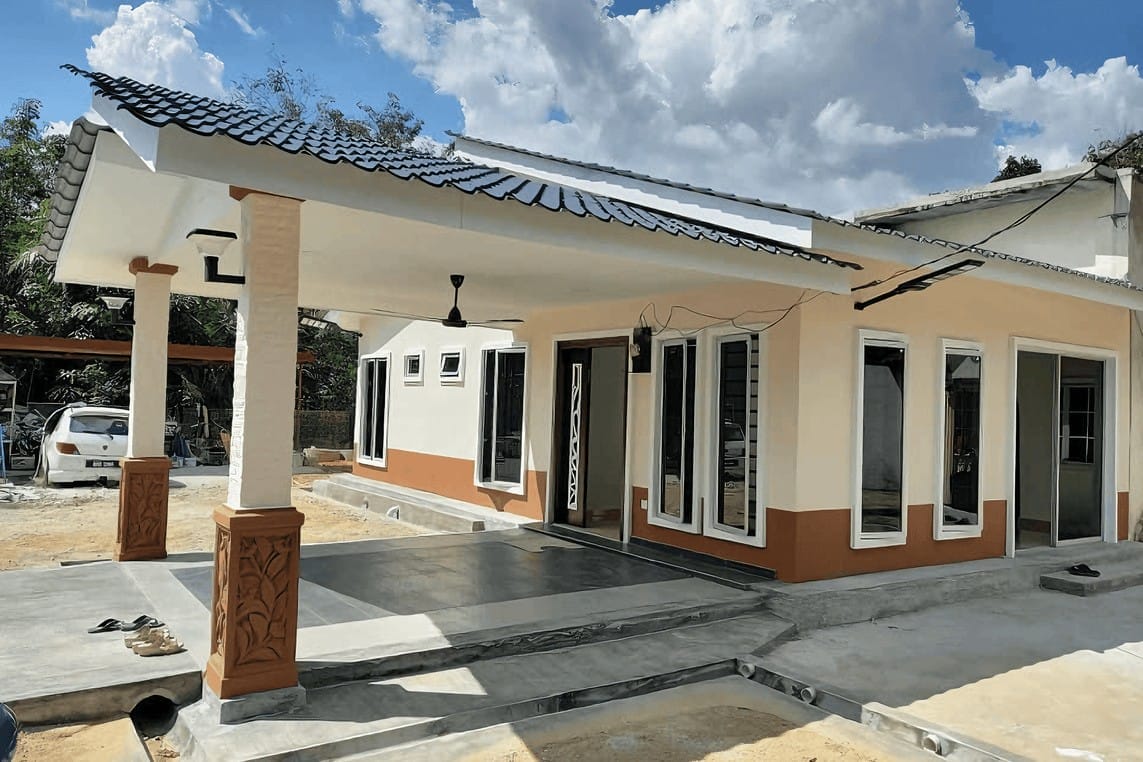
Blog
How Industrial Construction is Powering Malaysia’s Future | RumahHQ

Hey there! Have you ever thought about how the buildings and infrastructure around us actually come to life? In Malaysia, industrial construction is more than just putting up structures; it’s like laying down the foundation for our future. From the bustling ports that keep our economy moving to the state-of-the-art factories that are driving innovation, industrial construction is playing a huge role in shaping our country. In this article, we’ll dive into how this sector is not only transforming our skyline but also powering job creation, boosting local businesses, and preparing Malaysia for a more sustainable tomorrow. So, let’s take a closer look at how these developments are paving the way for a brighter future for all of us!
Revolutionizing Infrastructure: The Role of Industrial Construction in Malaysias Growth
Industrial construction is shaping a vibrant future for Malaysia, acting as the backbone for economic development and societal advancement. With an ever-growing demand for infrastructure, the sector is driving the development of essential facilities such as factories, logistics hubs, and warehouses. This construction boom isn’t just about cement and steel; it’s about creating jobs for Malaysians, stimulating the local economy, and enhancing our global competitiveness. The adoption of innovative technologies in industrial construction, such as smart building solutions and sustainable practices, is further propelling this momentum.
The Malaysian government has recognized the crucial role of industrial construction in its National Policy on Industry 4.0. This initiative prioritizes the integration of digital technologies into manufacturing and urbanization efforts. By facilitating the growth of high-tech parks and industrial zones, Malaysia is laying a strong foundation for attracting foreign investments. Notably, with companies moving towards automation and smart factories, skills training programs are being implemented, ensuring our workforce is equipped for the future, boosting productivity, and promoting sustainable practices in manufacturing.
| Key Benefits of Industrial Construction | Impact on Malaysia |
|---|---|
| Job Creation | Enhanced employability for locals, reducing unemployment rates. |
| Investment Inflows | Attraction of foreign direct investments, boosting GDP. |
| Infrastructure Development | Improved logistics and supply chain efficiency across sectors. |
| Technological Advancements | Increased competitiveness in the ASEAN market. |
As the industrial construction sector continues to thrive, it also fosters sustainable urban environments through eco-friendly building practices. Initiatives promoting green construction materials and renewable energy use are becoming standard, aligning with Malaysia’s goal of becoming a low-carbon economy. Moreover, collaborative efforts between the government, private sector, and educational institutions are essential in driving innovative designs and sustainable technologies. It’s a win-win scenario where industrial construction not only fuels economic growth but also embraces the ecosystem in which it operates, ensuring a brighter and more sustainable future for all Malaysians.

Sustainability in Focus: Eco-Friendly Practices Transforming the Construction Landscape
The construction industry in Malaysia is undergoing a remarkable transformation, with eco-friendly practices taking center stage. As the nation embraces a sustainable future, green building techniques are becoming the norm rather than the exception. This shift integrates a variety of practices, such as using recycled materials, minimizing waste, and incorporating energy-efficient systems. By focusing on these elements, contractors not only reduce their carbon footprint but also enhance the overall wellbeing of the communities they serve.
One of the key innovations driving this change is the adoption of modular construction. This method allows for significant material savings and reduces site waste because components are manufactured off-site and assembled on location. Additionally, incorporating smart building technologies is critical in maximizing energy efficiency. These systems can monitor resource usage in real time, enabling property managers to make informed decisions. Not only does this lower operational costs, but it also contributes to a more sustainable urban environment.
Here’s a quick look at some of the eco-friendly materials gaining traction in Malaysia’s construction sector:
| Material | Benefits |
|---|---|
| Recycled Steel | Durability and reduced energy consumption during production |
| Bamboo | Rapid renewability and high strength-to-weight ratio |
| Lightweight Concrete | Lower material usage and better thermal performance |

Skills Development: Building a Workforce for Future Industrial Projects
The future of industrial construction in Malaysia hinges on the continuous enhancement of workforce skills, ensuring that each worker is equipped to tackle the evolving demands of the industry. Training programs focused on both hard and soft skills are essential. Companies must emphasize the following key areas to prepare their workforce for industrial projects:
- Technical Proficiency: Familiarity with modern construction techniques and technologies.
- Safety Awareness: Understanding safety protocols to reduce workplace accidents.
- Project Management: Skills to oversee and coordinate various construction activities effectively.
Transforming the workforce also involves a collaboration between industries and educational institutions. Partnerships can foster internships and hands-on training sessions that not only fill the skill gaps but also provide real-world experience. Consider these collaborative efforts:
| Collaboration Type | Benefits |
|---|---|
| Industry-Academia Partnerships | Aligns curriculum with industry needs. |
| On-the-Job Training | Enhances practical skills and confidence. |
| Mentorship Programs | Guidance from experienced professionals. |
Ultimately, investing in skills development today ensures a robust workforce that can meet the challenges of tomorrow’s industrial landscape. As we foster a culture of continuous learning and adaptation, we arm our workers with the tools they need to push Malaysia forward in its industrial journey, paving the way for innovation and sustainable growth.

In the ever-evolving landscape of construction, technological innovations are the heartbeat of progress. Building Information Modeling (BIM) is transforming how projects are designed and executed, allowing teams to visualize every aspect before the first brick is laid. By integrating 3D models, stakeholders can pinpoint potential issues early, improving collaboration and reducing costly revisions down the line.
Another game-changer is drones, which are increasingly used for site surveys and inspections. These flying tech marvels provide high-resolution images and real-time data, enabling developers to monitor progress from the sky. This means quicker decision-making and better resource management, with a significant reduction in manual labor and time spent on the ground. Imagine having an aerial view of a bustling construction site at your fingertips!
| Technology | Benefits |
|---|---|
| Augmented Reality (AR) | Enhanced visualization for planning & safety training |
| 3D Printing | Speedy prototyping & reduced material waste |
| Smart Wearables | Improved safety tracking & real-time health monitoring |

Public-Private Partnerships: Collaborating for Economic Resilience and Development
In Malaysia, the collaboration between the public and private sectors has been pivotal in driving industrial construction forward, creating an ecosystem where innovative ideas and substantial resources come together. This partnership enables the country to tap into diverse funding sources, harnessing not just government budgets but also private investments to spur construction projects that elevate economic development. By uniting the strengths of both sectors, Malaysia is not just building facilities but laying down a framework for a sustainable and resilient economy.
The benefits of these collaborations are multifold. When the government partners with private companies, the outcome is often:
- Enhanced efficiency: Leveraging private-sector expertise for project execution.
- Increased innovation: Bringing in cutting-edge technologies and modern practices.
- Job creation: Generating employment opportunities across various scales.
This synergy not only promotes competitive construction practices but also addresses critical areas such as infrastructure resilience, which is essential in the face of changing economic dynamics.
Moreover, public-private partnerships are setting the stage for a more sustainable approach to industrial projects. By prioritizing environmental integrity and resource management, these collaborations are reshaping urban landscapes across Malaysia. A recent analysis of key ongoing projects showcases this shift. Below is a snapshot of notable developments fueled by these partnerships:
| Project Name | Type of Partnership | Expected Completion |
|---|---|---|
| Sustainable Industrial Park | Public-Private | 2024 |
| Smart Infrastructure Hub | Joint Venture | 2025 |
| Urban Revitalization Project | Private Investment | 2023 |

Regulatory Framework: Navigating Compliance for Successful Industrial Ventures
Understanding the local regulatory landscape is crucial for any industrial venture in Malaysia. Whether you are a seasoned player in the market or a startup finding your footing, navigating compliance means grasping various laws and guidelines set forth by Malaysian authorities. This includes ensuring adherence to licensing requirements, environmental regulations, and construction codes. For instance, companies must familiarize themselves with the Environmental Quality Act and the Town and Country Planning Act, which govern the impact of industrial activities on local ecosystems and urban development.
A practical approach to compliance involves integrating regulatory considerations into the project lifecycle right from the planning phase. Engaging with relevant stakeholders can also facilitate smoother navigation through the approval processes. Key elements to consider include:
- Engagement with Local Authorities: Building relationships can help in understanding the nuances of local regulations.
- Regular Compliance Audits: These ensure that operations remain in line with the evolving legal landscape.
- Training and Development: Investing in training for your team can mitigate risks associated with regulatory breaches.
Moreover, having a team dedicated to compliance management can significantly enhance operational efficiency. This team can monitor legislative changes, manage documentation, and supervise site inspections, which saves time and resources in the long run. A structured approach to compliance could also be outlined in a simple table:
| Compliance Activity | Frequency | Responsible Party |
|---|---|---|
| Licensing Applications | As Required | Compliance Officer |
| Environmental Audits | Bi-Annually | Environmental Specialist |
| Training Sessions | Quarterly | HR Department |

Regional Opportunities: Strategic Investments in Malaysias Industrial Zones
The heartbeat of Malaysia’s industrial future lies within its thriving industrial zones, where strategic investments are set to unlock a plethora of opportunities. These zones are not just mere locations; they are vibrant ecosystems designed to foster innovation, collaboration, and economic growth. Companies from various sectors are now eyeing these areas, attracted by the promise of reduced overheads and increased productivity. With infrastructure enhancements, better connectivity, and government support, businesses are finding a fertile ground to expand their operations, potentially transforming them into regional powerhouses.
Here are some key advantages that industrial zones offer for both local and foreign investors:
- Competitive Incentives: The Malaysian government provides various tax breaks and incentives to attract industries, making it a cost-effective choice for businesses.
- Access to Resources: Proximity to suppliers and a skilled workforce makes it easier for manufacturers to source materials and hire talent.
- Infrastructure Investment: Ongoing efforts to enhance transport links, such as ports and highways, ensures that goods move efficiently, reducing lead times.
Moreover, tapping into these zones is not just about individual growth but contributes significantly to the broader economic landscape. As firms establish themselves, they create job opportunities and stimulate local economies. To illustrate the impact, consider the following table showcasing major industrial zones and their primary sectors:
| Industrial Zone | Primary Sector | Key Opportunities |
|---|---|---|
| Iskandar Malaysia | Manufacturing & Logistics | Trade Facilitation, E-commerce |
| Prai Industrial Estate | Electronics & Electrical | Export Markets, Tech Innovation |
| Selangor Science Park | Biotechnology | Research & Development |

Future Outlook: Charting the Path for Sustainable Growth and Prosperity
As Malaysia gears up for the future, the focus on industrial construction is paving the way for both economic and environmental sustainability. The integration of advanced technologies, such as smart building systems and green construction materials, not only enhances the efficiency of new projects but also substantially reduces the carbon footprint associated with traditional construction methods. With the implementation of these innovative solutions, companies are now able to achieve impressive energy savings while contributing positively to the nation’s climate goals.
Moreover, the government’s commitment to infrastructure development through initiatives like the Malaysian National Industrial Policy is crucial for fostering sustainable economic growth. This policy aims to facilitate investment in key sectors, including manufacturing, logistics, and technology, ensuring the nation remains competitive on a global scale. By prioritizing collaborative partnerships between the public and private sectors, the groundwork for a diversified economy that prioritizes environmental stewardship is firmly established, providing a robust foundation for future progress.
In addition, let’s look at some key areas that will play a pivotal role in driving sustainable growth in Malaysia’s industrial landscape:
| Focus Area | Impact |
|---|---|
| Renewable Energy Adoption | Reduces reliance on fossil fuels. |
| Efficient Waste Management | Minimizes landfill waste through recycling and reuse. |
| Workforce Development | Empowers locals with skills for the future. |
| Technological Innovation | Enhances productivity and competitiveness. |
By harnessing these strategies, Malaysia’s industrial construction sector stands not only to grow but to thrive sustainably, empowering communities and protecting the environment for generations to come. This conscientious, future-forward approach will ensure that the nation is not just building structures, but also crafting a legacy of prosperity that resonates with the aspirations of its people.
The Conclusion
As we wrap up our journey through the fascinating world of industrial construction in Malaysia, it’s clear that this sector is more than just a backdrop for our growing skyline—it’s a powerful engine driving the nation’s future. From creating jobs to fostering innovation and sustainability, the impact of industrial construction is undeniable.
We’ve seen how modern designs and advanced technologies are not only transforming our cities but also setting the stage for a more resilient economy. With the right investments and collaborative efforts, the possibilities are endless. So, as we look ahead, let’s keep the conversation going and stay engaged with the developments in this exciting field. After all, the future of Malaysia is being built right now, one brick at a time!
So, what do you think? Are you excited about the path we’re on? Share your thoughts and let’s explore this journey together!
kontraktor rumah
bina rumah
pinjaman lppsa
pengeluaran kwsp
spesifikasi rumah
rumah batu-bata
pelan rumah
rekabentuk rumah
bina rumah atas tanah sendiri
kontraktor rumah selangor
rumah banglo
Source link











